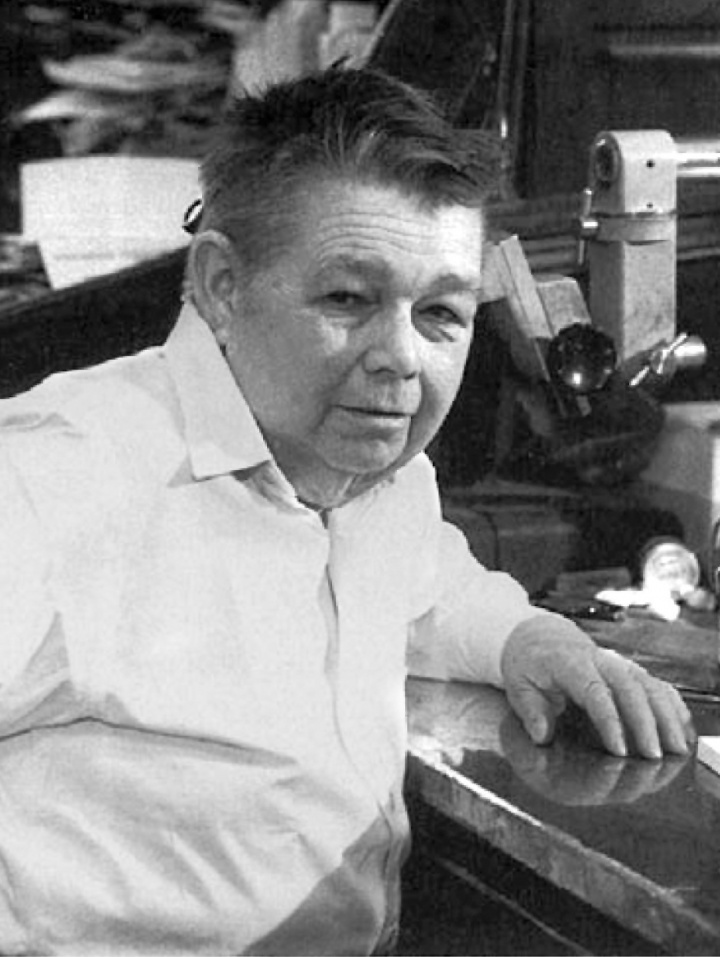For Karl F. Koopman ’43, GSAS’50, bats were his lifework and love.
Columbia College | Columbia University in the City of New York
For Karl F. Koopman ’43, GSAS’50, bats were his lifework and love.
For some people, bats are creepy creatures of the night that foul the world with squeaks and guano. For others, they are the alter ego of Bela Lugosi and his bloodsucking cohort.

Over a long, distinguished (and largely obscure) career, Koopman was one of the world’s leading chiropterologists. In caves, rainforests, wildlife preserves and anywhere else he might find his quarry, he obsessively collected, studied and classified the only mammals that flap hither and yon. Koopman pored over these “flying foxes” in laboratories, published widely and held forth endlessly about them in public.
“There’s been a tremendous amount of misunderstanding about bats,” he said in a 1979 interview for United Press International. “I’d say they’re as friendly as gerbils.”
Born in Honolulu, Koopman moved with his family to California as a child and glommed onto nature with frequent visits to the Los Angeles County Museum of Natural History. He earned a Ph.D. at Columbia with a dissertation on fruit flies; later, he turned briefly to birds and, then finally, to bats. At various times he was a biology instructor at Queens College, and was on the staffs at the Academy of Natural Sciences in Philadelphia and Chicago’s Field Museum of Natural History; he joined New York City’s American Museum of Natural History in 1961, where he stayed for 24 years
But Koopman didn’t restrict himself to his office. Though he wasn’t exactly built for fieldwork — stout and dwarfish, perhaps 5 ft. tall, with sensitive skin — he circled the globe twice in pursuit of his game. He had a penchant for the Caribbean and Latin America, gathering and scrutinizing bats in Jamaica, the Bahamas, the Virgin Islands, the Lesser Antilles, Belize, Bolivia and Mexico.
Slowly and steadily, he acquired an international reputation. In books and some 100 scholarly articles, Koopman made major contributions to bat classification and evolution. His specialty was bat biogeography — describing how bats were distributed throughout the world and explaining how they got there.
Koopman’s fascination, suggested fellow chiropterologist Thomas A. Griffiths, came from wanting to fill a scientific void: “He did something no one had ever done before — examining the regions of the earth and seeing how bats related to them. And that inspired other scientists to do the same thing.” When Koopman began his research, his friend and colleague Merlin Tuttle estimated, there were approximately 850 bat species. By the time his career was over, there were around 1,300.
Colleagues who tried to trip him up on bat trivia usually failed. “But if you had him stumped,” said Tuttle, “he would come back at you pretty quickly with names and terminology that would slow things down and have us pondering for a bit. We couldn’t figure out if he was buffaloing us.” At professional bat gatherings, Koopman would sit in the front row and invariably pose the first question, prefacing it with a high-pitched, “Weeell, it seems to me that ... ”
“Send him an exotic bone,” wrote author and naturalist Diane Ackerman, “and he could swiftly identify it down to the subspecies.” In 1944, a little brown bat (Myotis lucifugus) was found in Iceland, to which no bats are native. Years later, Reykjavik’s Museum of Natural History sent Koopman the preserved specimen, hoping for an explanation. Identifying it as a North American (as opposed to European) variety, he figured that this particular gatecrasher had swooped aboard a ship at St. John’s, Newfoundland, and inadvertently stowed away. After all, Koopman pointed out, there was plenty of heavy shipping between St. John’s and Reykjavik during WWII.
He dealt with laymen, too. A New York Times reader once asked in a Q&A, “How can a bat hang upside down for long periods without damaging its brain?” Koopman replied, “This is like saying, ‘How are you able to stand up and not have blood collect in your feet?’” When someone reported a 130-lb. Philippine bat with a 12-ft. wingspan, he brushed it off as a “zoological tall tale.” He dismissed popular myths that bats are inordinately rabid and will fly into your hair. “I don’t know how that particular superstition got started,” he said.
Koopman was a dedicated scholar. In 1977, Queen Elizabeth II visited the North American Symposium on Bat Research in Ottawa. Koopman’s colleagues were atwitter. But he cared only about the proceedings. “My ancestors fought a war,” he said, “so that I wouldn’t have to be excited about that monarchy!”
And he had a puckish sense of bat humor. In trying to define “microbats,” he proposed two types: yangochiroptera and yinochiroptera. Koopman drew the names from the Confucian doctrine of the passive “yang” and the active “yin” — because the yinochiroptera had a uniquely mobile bone in its upper jaw. Once, tongue planted firmly in cheek, he said he welcomed global warming: “It extends the ranges of all those tropical bats! They’ll be up in North America where I can study them more easily!”
Koopman died on the Upper West Side on September 22, 1997. Many of the delicate techniques he used to dissect his prizes died with him. But his name lives on in the Latin classifications of various mammals, including two varieties of mice, a rat and a porcupine.
And, of course, he has a couple of bats to his nomenclatural credit: the yellow-shouldered Sturnira koopmanhilli and the brown fruit-eater Koopmania concolor. The “mania” in the latter was entirely apropos.

Published three times a year by Columbia College for alumni, students, faculty, parents and friends.
Columbia Alumni Center
622 W. 113th St., MC 4530, 6th Fl.
New York, NY 10025
212-851-7852
cct@columbia.edu

Columbia Alumni Center
622 W. 113th St., MC 4530, 4th Fl.
New York, NY 10025
212-851-7488
ccalumni@columbia.edu